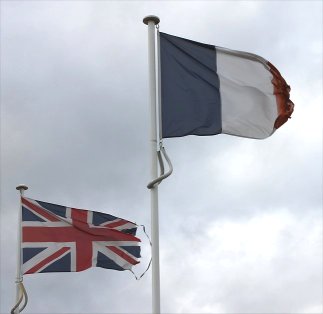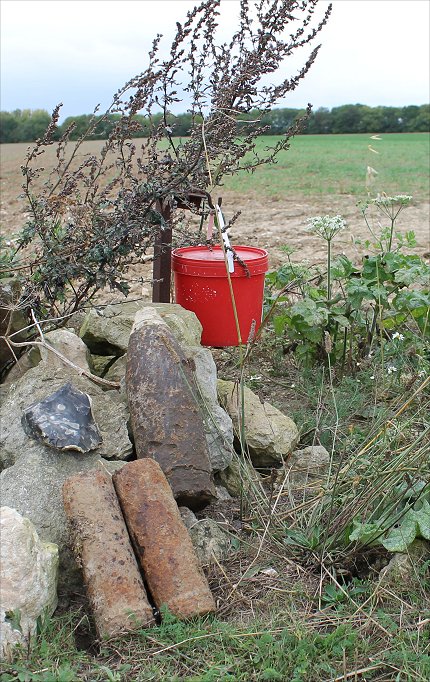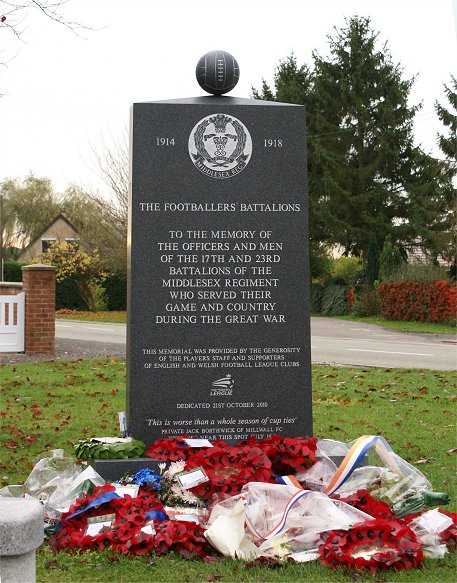



This is the view from north of Maricourt along the
allied line where the British sector ended and the French sector
began. The British line extended left from here to Machine Gun
Wood where it pivoted forward toward the north end of Talus Boise.
Talus Boise was home to British reserve positions, dugouts,
machine guns, and mortars as well as a light rail line. The
Allied attacked along the axis of the road at right toward Montauban
and Bernafay Wood. The Brick Factory was attacked by
the British, but first Montauban was captured.  |
 |


| On the far ends of this panorama are Maricourt and Maricourt
Ridge - in the British rear - and which the British used to
observe German positions and hide their artillery. The British
front line was roughly along the axis of the road that passes Machine
Gun Wood. At the wood, however, the line jutted forward toward
the northern end of the trees at Talus Boise. At the time of my
visit there were artillery projectiles that had been plowed up and
placed beside the road for disposal. Next we will walk along the track in the direction of Montauban for a better view. |
 |



| We have walked up the track visible on the far right of
the panorama. This is the same track visible in the left-center
of the panorama, and the British front line was parallel to this track
a little in the direction of Montauban. Starting off the
attack, Captain Billie Nevill threw a soccer ball forward and
encouraged his men to kick it forward as they advanced. This
quickened the advance, making it more successful and less costly. Next we continue along the track to the main road. |
 |


